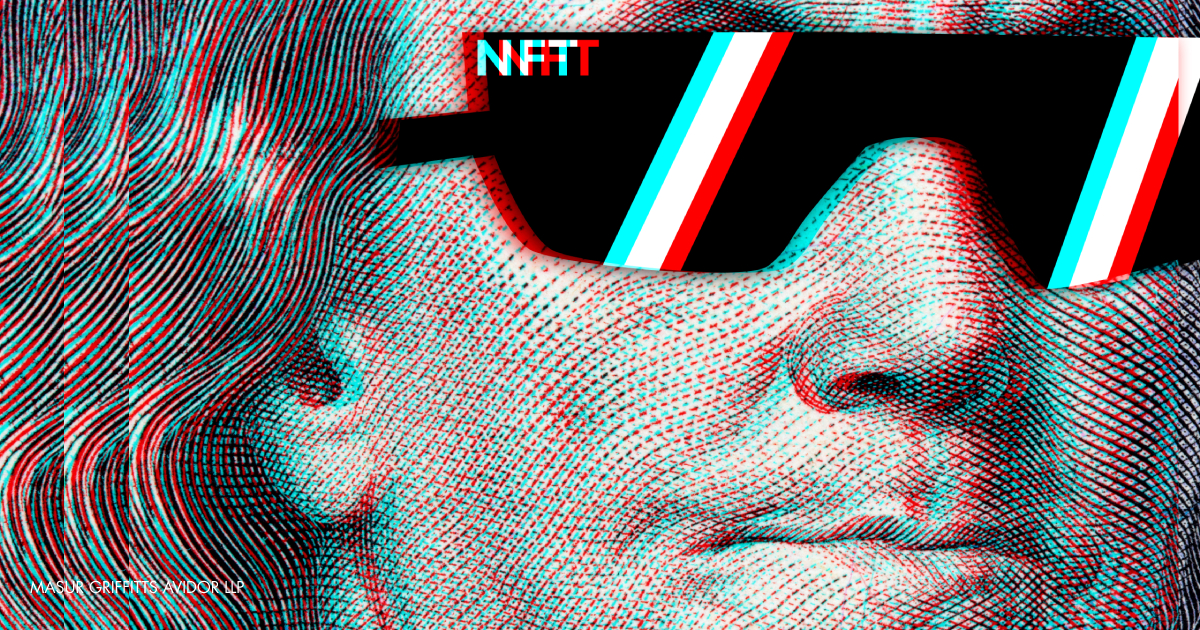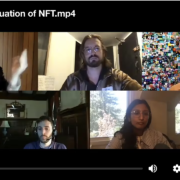DAOs are the Punk Rock of Corporate Law
By Steven Masur and Lydia Amamoo
There’s something new and amazing happening in corporate law. Decentralized Autonomous Organizations, or DAOs. DAOs represent an evolution of corporate law that moves at the exponential speed of technology.
What is a DAO?
In its simplest form, a DAO is a self-governing group of people who control a bank account. Blockchain technology enables the rules of engagement for the DAO to be coded into smart contracts such that all participants can see transactions, and no participant can act counter to the smart contracts without the approval of all participants. The smart contracts are coded onto coins, which individuals can purchase to participate in the DAO. Because most DAOs make use of blockchain technology, the smart contracts within them can be revised and updated upon a vote of the participants, and these revisions will be immutable and transparent to all.
How are DAOs Used?
These self-governing voting trusts can be used for almost anything. A common use of a DAO is people banding together to buy something of value, like an unreleased Wu-Tang Clan record, a Stradivarius violin, a building, or even a rare original copy of the U.S. Constitution for nearly $50 million dollars. Another common use of a DAO is as a basic governance structure. Examples range from CryptoMondays’ DAO, which decides when and where a monthly event will take place and what will be discussed, to DAOs controlling the operations of an entire institution, government, or company, like the Shapeshift DAO.
Why were DAOs Created?
The SEC’s accredited investor rules, which require a net worth of at least $1 million dollars or annual income in excess of $200,000 to qualify to invest in a private startup, left normal people behind during one of the biggest wealth creation cycles in U.S. history. Only the relatively rich could participate and risk their money on a new startup with new ideas, unless they had an in – if they were either a part of the startup, or the founders’ friends or family. For those starting companies, despite intense competition among law firms doing early-stage formations, the average cost of setting up even a simple company properly ranges from as low as a few hundred to upwards of $250,000. At the lower end of this range, mistakes and omissions in the corporate documents, improperly established management structures, missed state-regulated deadlines and tax payments, and outright exploitation by those more sophisticated in corporate law, have cost founders millions of dollars. So, in a very real way, DAOs are made by and for people frustrated and disenfranchised by the current state of corporate law.
How are DAOs Changing Corporate Law?
DAOs fly in the face of established corporate law because they allow participants to directly vote their interests, instead of investing their trust in a board of directors, which in turn delegates operational duties to officers who control an ever-expanding hierarchy of managers. Traditional corporations exist and must abide by the laws of a state or country and the regulations of any territory in which they do business. DAOs are empowered by the basic human right of freedom of association, and most DAOs currently exist outside the system of states or governments. As a result, they represent a technology-driven evolution in corporate law, transcending territorial government in the same way that all internet-technologies transcend territories. DAOs open a universe of possibilities for human self-governance, decision-making, and participatory wealth creation. Hundreds of DAOs have been created for an increasingly wide variety of purposes, experimenting with new and different voting mechanisms, including tiered voting, voting on specific areas of competency, or using defined voting roles. Any conceivable voting system can now be hard-coded into the smart contracts of a DAO, tested, and then manipulated until it works as desired. The exponential growth of DAOs, and the process of iterative evolution is changing corporate law, not at the speed of legal precedent or legislative process, but at the exponential speed of technology.
So… What’s the Problem?
One problem is limited liability. As a matter of law, a corporation or LLC can limit the liability of participants to just the amount they invested. While a DAO could include this limitation in its rules of engagement, under the law of most countries, if someone outside the DAO were to sue the DAO, each DAO participant could potentially be held equally responsible for paying the full amount of any judgments against the DAO.
Another problem is a limited instruction set within a DAO for dealing with unforeseen problems. Corporations and LLCs can rely upon boilerplate protections built into their corporate documents, as well as laws and legal precedent specifically addressing the history of similar problems for prior corporations and LLCs. This lack of precedent leaves DAOs susceptible to legal claims, lacking a strong basis of guidance for what to do in the wide variety of situations that arise through normal human interactions, including business interactions.
A third problem is the potential for carelessness or outright exploitation at the hands of those programming the smart contracts. A malicious or sloppy programmer could build into the smart contracts the means to take or divert the money contained within the DAO, or even result in the DAO being hacked.
LLC-Wrapped DAOs
It is still very early, but a few states and countries are getting on the blockchain bandwagon and have adopted DAO legislation. These laws are intended to extend the concept of limited liability to DAOs.
- Vermont was the first U.S. state to make corporate legislation tailored to companies utilizing blockchain-based technology. The Vermont Blockchain-Based LLC (BBLLC) isn’t specific to DAOs but applies standard LLC law to any company using blockchain-based technology for a material portion of their business activities. However, unlike the standard LLC, a BBLLC is required to make additional disclosures in its formation documents, such as including a mission statement and specifics on voting procedures and the blockchain technology that will be used. To determine and lock in these parameters at the outset of establishing the business may be incompatible with the innovative and ever-changing spirit of DAOs.
- Wyoming was the first U.S. state to make legislation specifically addressing DAOs. The Wyoming DAO LLC applies the state’s standard LLC law and a few additional requirements, including specifying the extent to which management will be conducted algorithmically. Unlike the BBLLC, the Wyoming DAO LLC can propose its own definition of a quorum for voting purposes. This amendment to traditional LLC law goes with the fluidity of DAOs, where requiring a majority for all voting matters might stifle DAO member participation on a large scale. A notable deterrent to the Wyoming DAO LLC is that the DAO must take actions or approve proposals within the first year or it will be legally dissolved. Tennessee followed in Wyoming’s footsteps, creating a “decentralized organization” or DO LLC, which operates similarly to the Wyoming DAO LLC, but still requires the default 50% quorum requirements.
- How are countries around the world doing things differently? Several countries, including Switzerland, Liechtenstein, Bermuda, Cayman Islands, the British Virgin Islands, and Singapore, are trying to become crypto-friendly hubs, but few have enacted DAO-specific legislation. Malta was the first country to introduce DAOs as a legal entity called a D corp, or decentralized corporation, but its legislation includes a hierarchical corporate governance structure that may be against the very nature of a DAO. The Republic of the Marshall Islands made its way into the crypto-arena back in 2018 when it first tried to launch a state-sponsored cryptocurrency as its legal tender. Now, the Marshall Islands have enacted a DAO regulation based on a mix of U.S. and English common law recognizing DAOs as legal entities similar to non-profit LLCs. The Marshall Islands’ statute provides for easy set-up, minimal KYC requirements, and member confidentiality, making it a highly desirable country to establish DAOs.
Conclusion: DAOs are Here to Stay
DAOs are considered by some to be a new fad that will pass by in the blowing wind. But DAOs are here to stay. The technology to implement them exists, is improving, and people will continue to use it, regardless of legality. Their motivation may be profit, or the desire to own things not otherwise accessible, or even to enjoy of the greater things in life, like smoothly operating community systems. But regardless of motivation, the old ways seem inaccessible, expensive, problematic, and difficult. People feel powerless. DAOs may be the early iteration of entirely new forms of human governance. Lawyers have a critical part in building this new infrastructure because of our knowledge of what went before and our experience with the tried-and-true methodologies that built the world in which we live today. But the world of tomorrow will be different.










